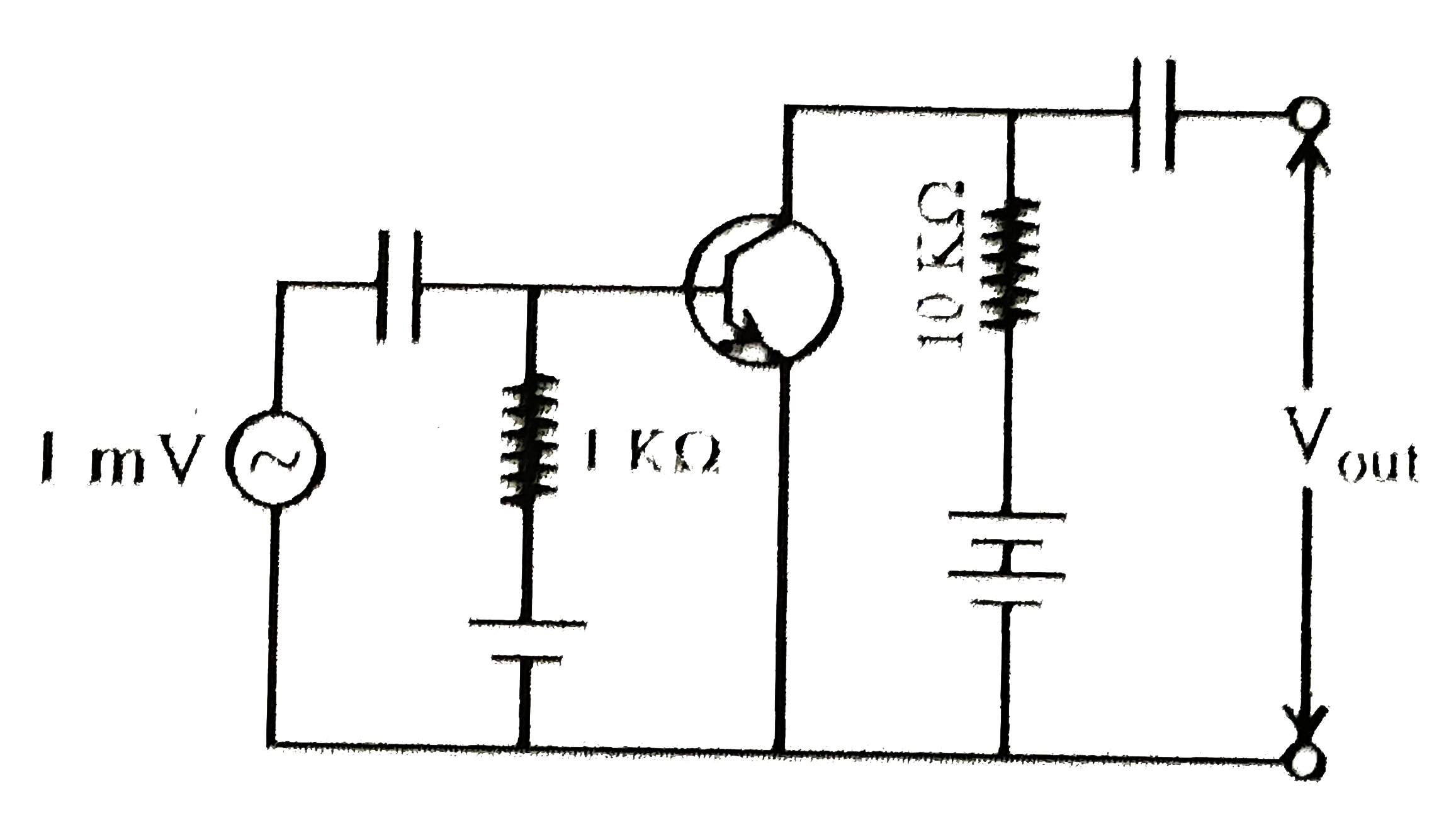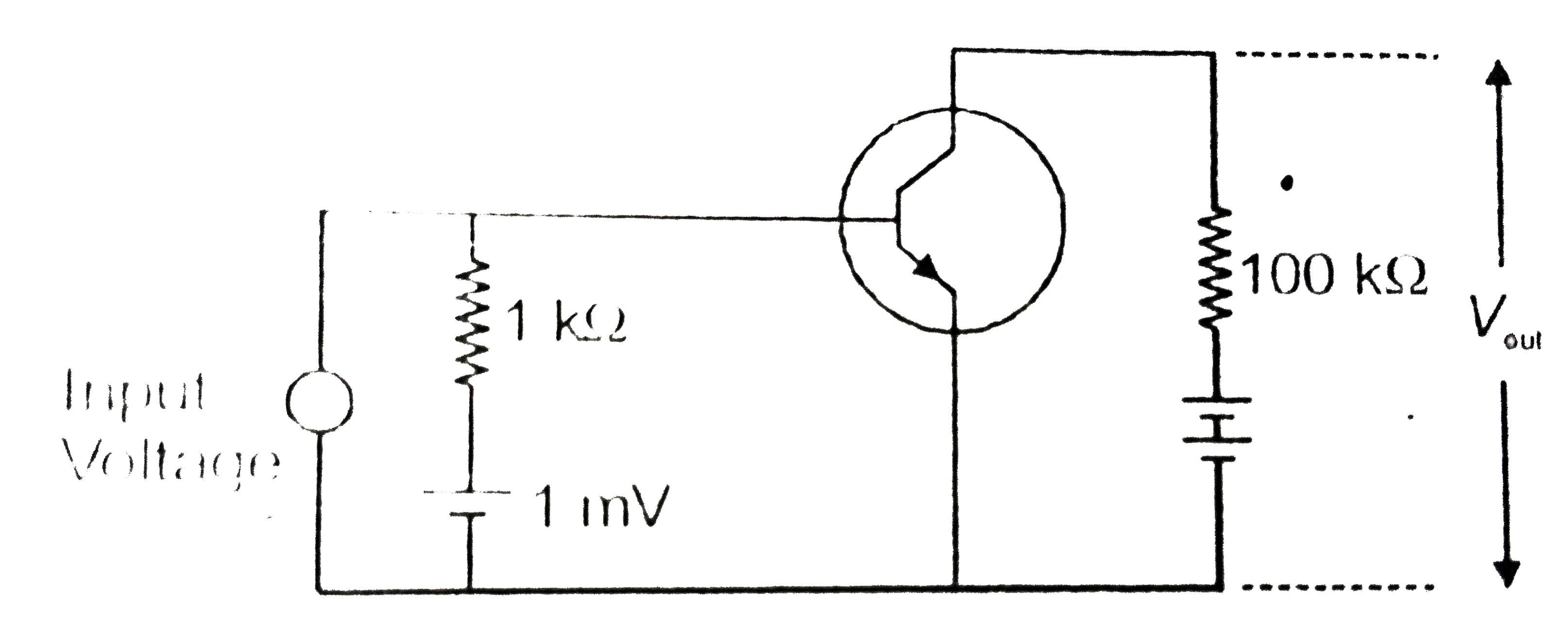In the following common emitter configuration an n-p-n transistor with current gain β = 100 is used. The output voltage of the amplifier will be

10 mV
0.1 V
1.0 V
10 V
The correct Answer is:C
Output voltage = Input voltage (Vi)× Voltage gain
∴Vo=Vi x (Current gain ) x (Resistance gain) …(1)
Current gain =β=100
Resistance gain = 10×1031×103=10
Vi=10−3V = 1 mV
∴ From (1) , Vo=10−3×100×10= 1V
Topper's Solved these Questions
Similar Questions
Knowledge Check
In the following common emitter configuration, and n-p-n transistor with current gain β=100 is used. The output voltage of the amplifier will be
 A10 mVB0.1 VC1.0 VD10 V
A10 mVB0.1 VC1.0 VD10 VIn the following common emitter configuration an NPN transistor with current gain β=100 is used. The output voltage of the amlifier will be
 A10mVB0.1VC1.0VD10V
A10mVB0.1VC1.0VD10VIn the following common emitter configuration an NPN transistor with current gain β=100 is used. The output voltage of the amlifier will be
 A10mVB0.1VC10VD1.0V
A10mVB0.1VC10VD1.0V
Discuss common-base configuration in amplifier using n-p-n transistor. Calculate its current gain and voltage gain.
View SolutionIn the given figure, a transistor is connected in common emitter configuration . If VBE=1V and current gain β=100, then the voltage across collector- emitter terminals VCE is
[VBE-voltage across base-emitter junction ]

View SolutionIn a common emitter amplifier circuit using an n-p-n transistor, the phase difference between the input and the output voltages will be:-
View SolutionIn the common emitter configuration of n-p-n transistor 1010 electrons enter the emitter in 1μs and 2% of the electrons are lost of the base. The current gain of the amplifier is
View SolutionIn the common emitter amplifier circuit, Fig. an npn transistor with output voltage of the amplifier as 1 V, the current gain of transistor amplifier is :

View Solution


